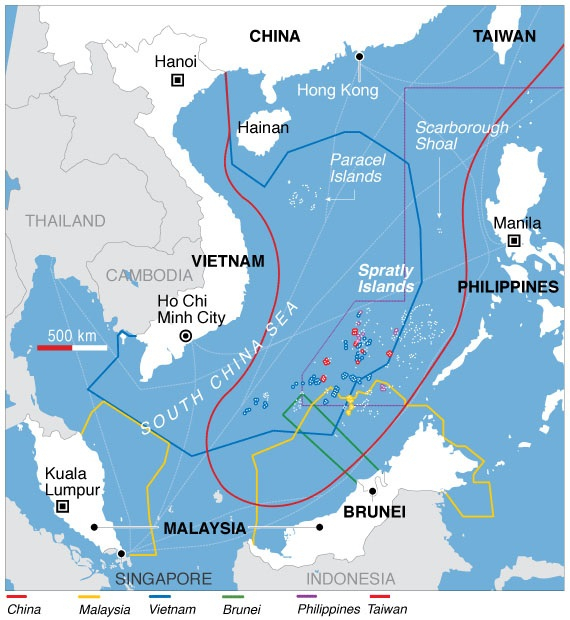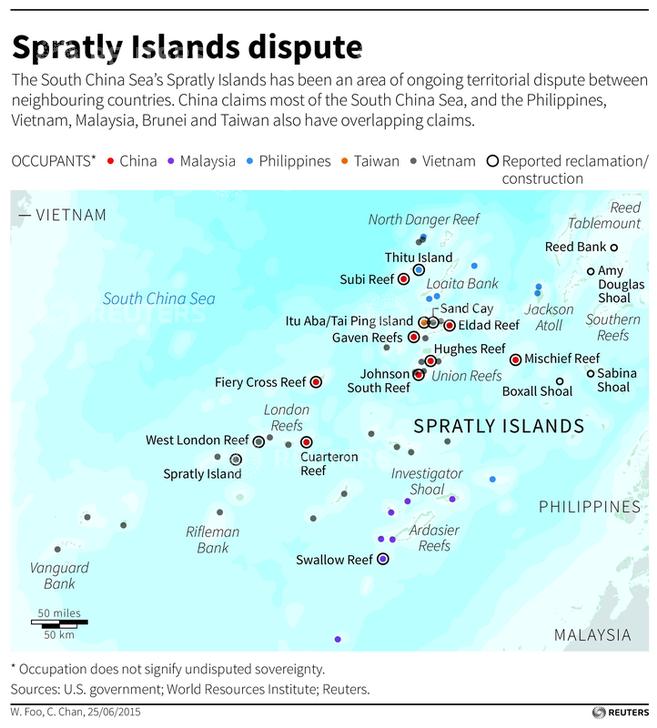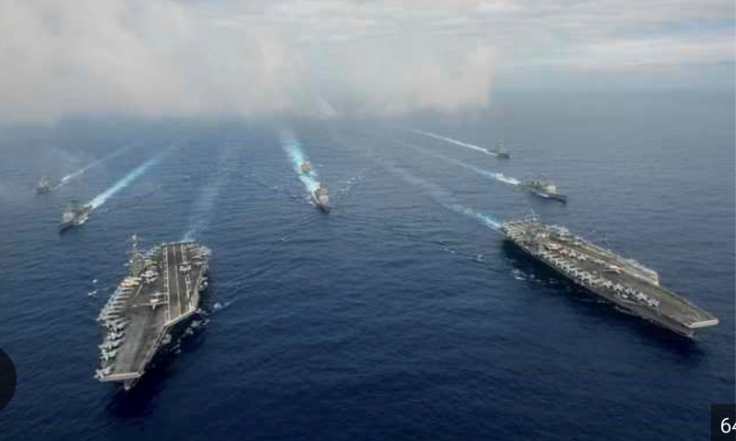The commander of the US Navy's Seventh Fleet has said China's aggressive behavior in the South China Sea must be challenged, citing Beijing's latest provocation in the disputed waters.
"My forces are out here for a reason," said Vice Admiral Karl Thomas, the commander of the US Navy's Seventh Fleet. The US official said the use of water canon by the Chinese coast guard against a Philippine vessel last week highlighted the 'shared challenges' in the region. The official also pledged US support for the Philippines.

"You have to challenge people I would say operating in a grey zone. When they're taking a little bit more and more and pushing you, you've got to push back, you have to sail and operate ... There's really no better example of aggressive behaviour than the activity on 5 August on the shoal," the Vice Admiral said, according to Reuters.
The Seventh Fleet is the US Navy's largest forward-deployed fleet. The unit is headquartered in Japan. It consists of 70 ships, more than 150 aircraft and as many as 27,000 sailors.

Last week, the Philippine Coast Guard said Chinese vessels fired water cannon at its vessels and blocked them even as they escorted boats carrying supplies for Filipino soldiers in a an island on the disputed Spratly Islands cluster.
At the core of the South China Sea conflict is the overlapping claims of sovereignty over two island chains -- Paracels and Spratlys -- and waters around them. China, Taiwan, Malaysia, the Philippines, Vietnam and Brunei have made claims to a clutch of shoals, rocky outcrops, atolls and sandbanks in the sprawling South China sea, making it a theatre of tense maritime dispute.
The South China Sea also has huge oil and natural gas reserves beneath its seabed, besides being a strategic sea route as well. However, China has been militarizing the region by dominating the smaller Southeast Asian nations that claim rights to the islands.
China lays claim to both the island chains stating that these were integral part of the empire from ages. In 1947 China formalised the claims by issuing a map showing the islands in its territory. But Vietnam has contested China's claims saying its rule over Paracels and Spratlys dates back to the 17th century.

China scored decisive military victories over Vietnam in recent decades in its quest to cement claims over the island chains. In 1974, more than 70 Vietnamese soldiers died in China's military offensive that seized control of Paracels. In 1988 Vietnam lost Spratlys to China in another bloody military conflict.
China angered Vietnam and the Philippines in 2012 when it created Sansha city, making it the administrative headquarters for the Paracels. Again that year, Vietnam alleged China sabotaged its exploration operations, setting off massive anti-China protests in the country.
In 2014, China set up a drilling rig in waters near the Paracel Islands and in 2015 satellite images showed Beijing was building an airstrip on land reclaimed around the Spratlys.
In 2016 the Philippines won an international arbitration case against China when the tribunal ruled that there was no legal basis to Beijing's claim that it has total sovereignty over most of the South China Sea.
The US has long called for freedom of navigation in the region and criticized Beijing for efforts to militarize the islands. Following the latest provocation, the US Department of State China is jeopardizing the freedom of navigation.
"Firing water cannons and employing unsafe blocking manoeuvres, PRC [China's] ships interfered with the Philippines' lawful exercise of high seas freedom of navigation and jeopardised the safety of the Philippine vessels and crew," the department said.









